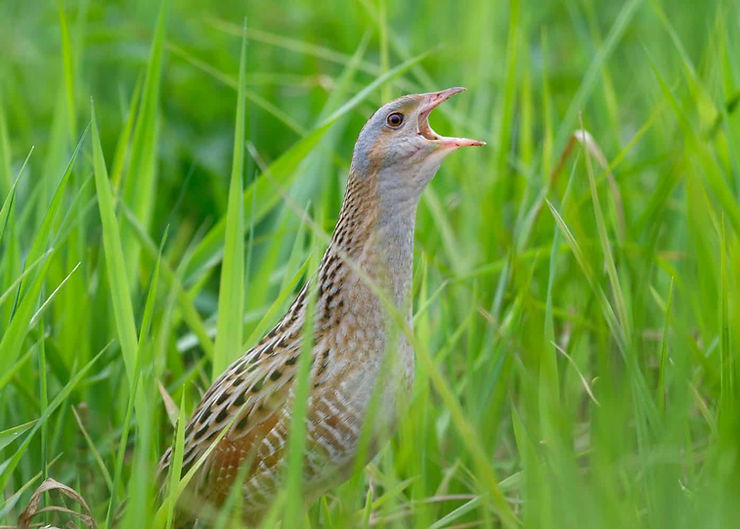By: Abigail Weintraub
As spring’s brisk warmth transitions into lengthy summer days, the corncrake’s piercing cry echoes through the steamy air, signifying the beginning of a new season. Clusters of the little blackbird-sized, chestnut-winged birds roam over Ireland hills.
Many years ago, this was how it used to be, but with the corncrake population declining rapidly, the beloved birds are seldom seen nor heard anymore.
Corncrakes are extinct in many parts of Western Europe, their habitats destroyed by modern agriculture. As a result, they are losing the ability to breed. The species dwells in long, loose grasses, avoiding mowed fields. “I remember in the 1970s, this area was full of corncrakes,” said farmer Patrick Mangan. “Then farmers started mowing grass earlier, and that ruined it, until the last corncrake in this area was right here, on this land.”
Farmers in the past disregarded plants such as stinging nettle as weeds and would often dispose of them, but they proved to be excellent shelter for the corncrakes. Now, farmers are devoted to preserving the birds by growing a bountiful supply of stinging nettle, refraining from early mowing, and the restricting use of artificial fertilizer.
The state launched the project Corncrake Life 18 months ago, aiming to achieve a 20% increase of the corncrake population across the project sites over the course of the project. The project is offering monetary incentives for farmers who supply the land with plenty of plants for the birds to make themselves at home. It started out as a pilot group of 50 farmers from the Atlantic coastal countries Donegal, Galway, and Mayo.
In studies over the past few years, Corncrake Life observed the population of corncrakes. 151 were spotted in 2018, this number increasing to 162 in 2019, and back to 146 the following year.
Farmers in Ireland are paid €304 per acre for preparing land fit for corncrake breeding. “We don’t reward farmers for having a corncrake on their land, we reward them for having the habitat,” said John Carey, director of Corncrake Life. “Even if a corncrake never showed up, you’d get skylarks, meadow pipits, all kinds of flowers, invertebrates and butterflies.”
Links:











